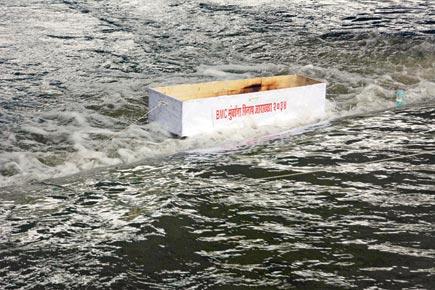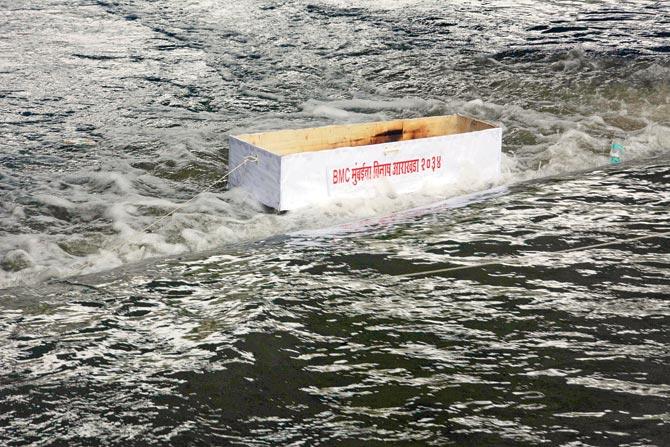Mumbai’s babus ought to take a closer look at how Venice’s planners are fighting their unforgiving tides with Project Mose and learn before its too late

 As the city that constantly struggles to survive the ravages of nature, it could well be in Mumbai’s favour to study the blueprints of the Italian jewel’s new endeavour
As the city that constantly struggles to survive the ravages of nature, it could well be in Mumbai’s favour to study the blueprints of the Italian jewel’s new endeavour
ADVERTISEMENT
 Sometimes, TV-viewing can make us sit up and think. We were still haunted by the sight of the swollen Mithi river that is now a part of our daily commute. As incessant and sudden showers lashed the city and its suburbs last week, the river threatened to rise, and brought back memories of that fateful day in July 2005.
Sometimes, TV-viewing can make us sit up and think. We were still haunted by the sight of the swollen Mithi river that is now a part of our daily commute. As incessant and sudden showers lashed the city and its suburbs last week, the river threatened to rise, and brought back memories of that fateful day in July 2005.
On one of our midnight browsing sessions, we halted at a show that highlighted Venice’s daily fight with rising water levels and how authorities were facing nature’s challenge with remarkable focus in the form of the Mose flood barrier project (named after the Biblical leader Moses). Much like how Moses had parted the Red Sea, this project included three massive gates at the entrance of the Venetian lagoon that were being built to control the flow of water and high tides.
Today’s Venice is a land mass that emerged from a cluster of 124 island settlements that began way back in the 7th century. Since old times, planners have always had to secure land from the lagoon and save the Italian jewel from the sea. In fact, the city’s charming palazzos, piers and residences are a salute to medieval engineering. Built on wooden stills, it was fascinating to learn how the buildings shift and adapt to the uneven settling on the ground under water.
While work is still in progress, once ready, the gates of this engineering marvel will be positioned at three inlets through which water will enter and leave the lagoon, and will be closed and opened to control water flow and high tides. One of the brains behind this project was a teenager when Venice’s worst flood occurred in 1966. As grainy images of that catastrophe flashed on the screen, he recalled in thick Italian-accented English, of the lessons that were learnt from that time. The camera panned across the outer walls of several heritage buildings including the world-famous St Mark’s Basilica that had etched a line to show the water level on that fateful day when Venice sunk.
Next, we were in the control room of Project Mose. It was abuzz with activity, as screens constantly monitored tidal activity. Other teams were studying buildings that were under threat due to excess crustacean activity and other elements that hastened rotting activity due to increasing tides; all of this was executed with jaw-dropping intensity.
What surprised us was that like Japan’s populace, which is familiar with and equipped to handle year-long tremors, Venetians too seem to go about life, and may we add, looking impeccably stylish in their rain wear.
Have our junket-fed babus in the BMC considered studying this project — and that somewhere in its blueprint, there might be lessons for Mumbai? These made for fascinating insights, even as lay folk like us stared into the TV screen with studious intensity. Why wait for another deluge for authorities to wake up and offer makeshift solutions?
mid-day’s Features Editor Fiona Fernandez relishes the city’s sights, sounds, smells and stones...wherever the ink and the inclination takes her. She tweets @bombayana. Send your feedback to mailbag@mid-day.com
 Subscribe today by clicking the link and stay updated with the latest news!" Click here!
Subscribe today by clicking the link and stay updated with the latest news!" Click here!






